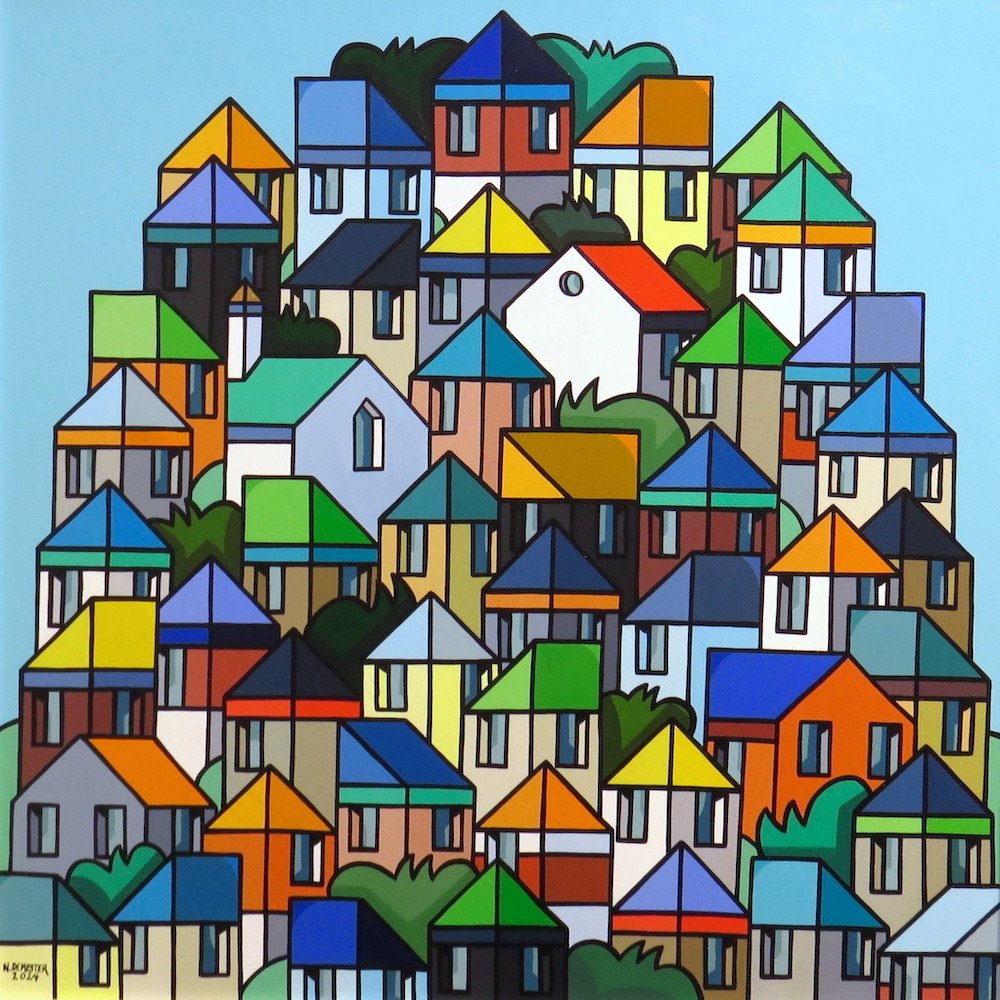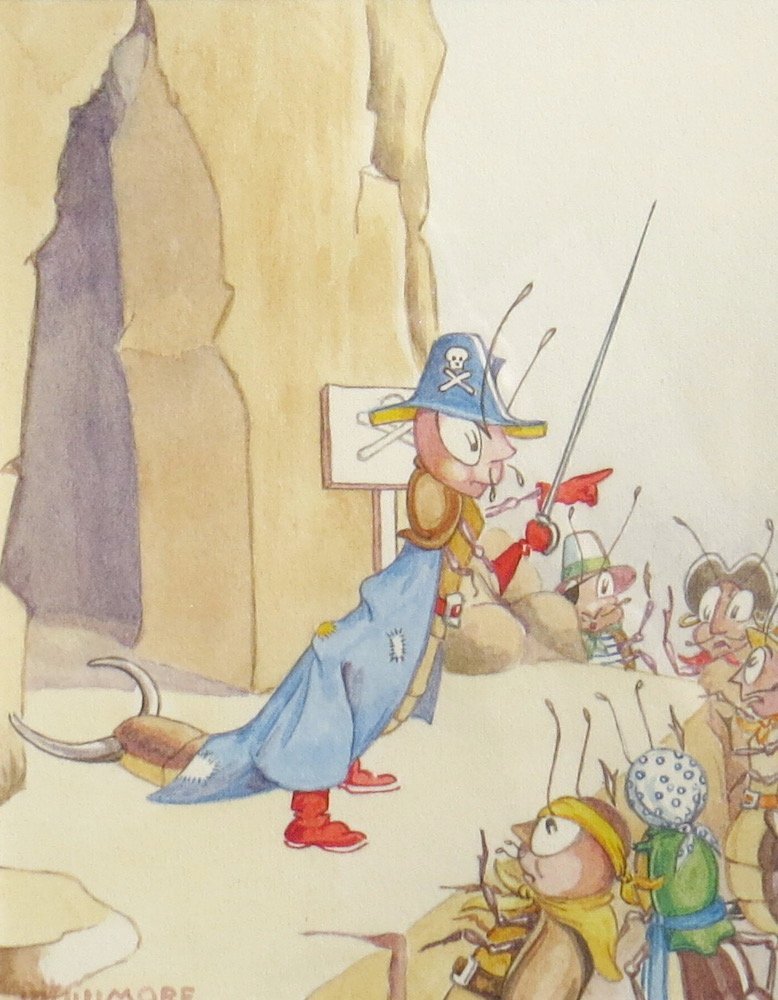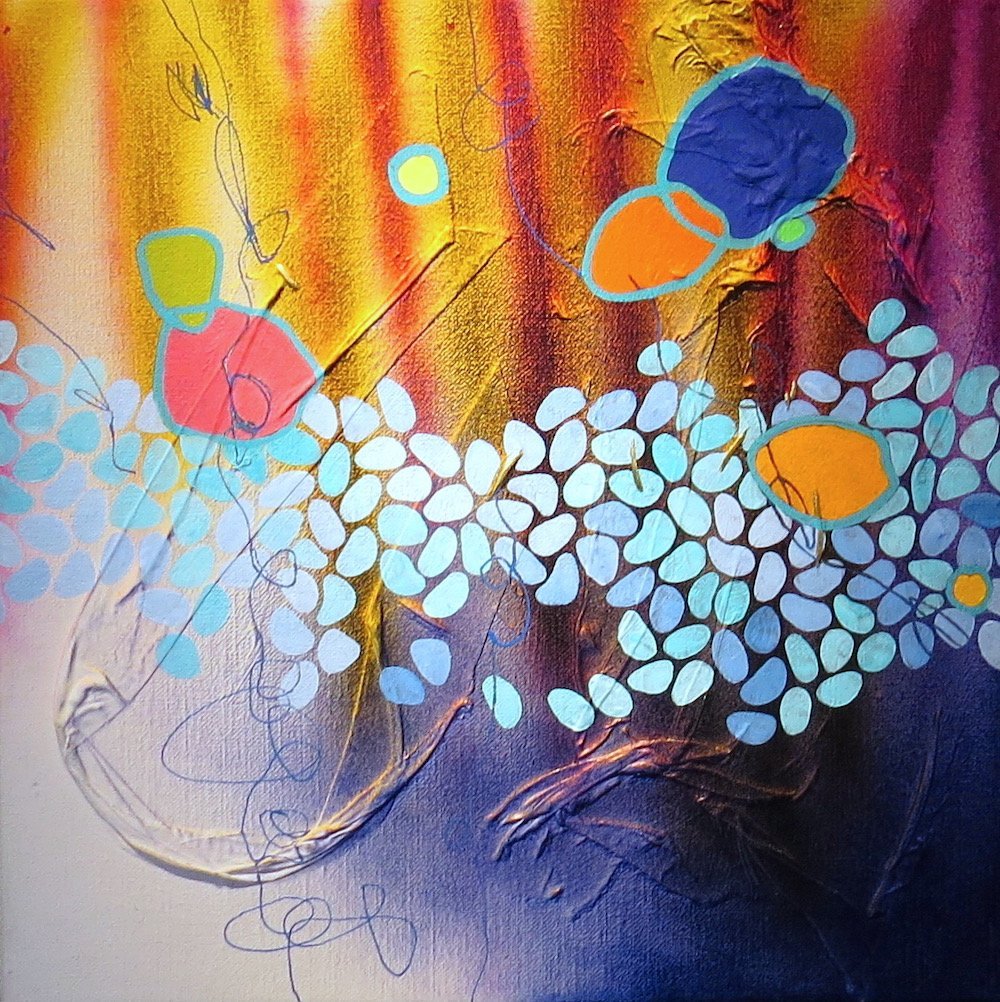
(Gallery De Novo)
Nic Dempster returns with a series of his urban geometries at De Novo.
Dempster’s works feature brightly coloured houses jostling for position in rhythmical grids, predominantly against backgrounds of bush or sky.
The effect is one of hustle and bustle, accompanied by a wry commentary on these townhouses "made of ticky-tacky", in the words of the old song.
The profusion of colour also suggest flowering bushes — these are rhododendrons of suburbs.
The style skirts a borderline between stained glass windows and a liberated, tripped-out Mondrian, with hard black verticals and diagonals interspersed with the organic greenery of garden trees. The whole effect is very pleasing and creates feelings of depth. The individual details of the works also reward repeated or longer looks.
Dempster has cleverly used an almost modular approach to several of the works — the same town edges are repeated with different interior buildings, several now adding shapes beyond the artist’s former array of houses. Warehouses and churches, for example, make appearances.
Dempster’s new style of "Kitset" works include solid polygons of colour in the design, adding to the effect.
The exhibition is completed by two far more personal works. These are painted over old wallpaper, found in the artist’s grandparents’ house, and are appropriately named for his tūpuna.

(Olga)
A link between grandson and grandparents is also present — indeed, is the main theme of — an exhibition at Olga, featuring work by D.H.Gilmore and Philip Madill.
While the Madill name is well-known in Dunedin art, the connection with David Hunter Gilmore is not often as well acknowledged, nor is his influence on his grandson’s work. Gilmore was a writer and illustrator of children’s books whose anthropomorphic characters became popular with children throughout Australia and New Zealand, particularly during the 1940s.
The current exhibition features completed works and sketches by Gilmore, alongside a display of his books. There is a charming simplicity and joy to the images, nostalgic artworks which clearly place them in a gentler era.
Madill clearly and obviously feels this distance. The exhibition’s title, "Anemoia", refers to a state of nostalgia for a time before a person was born, reflecting Madill’s connection to his late grandfather’s work. The three Madill graphite pieces on display are created with meticulous attention to detail. The depictions of cavalry soldiers have the same nostalgic feel of faded photographs, but also imply that they are children’s toys — both a connection with Gilmore’s works for children and a subtle statement on the soldier’s role as a pawn in other people’s games.

(Fe29 Gallery)
The work of artist Evan Woodruffe is currently on display at Fe29 Gallery.
There is an organic, landscape-like feel to Woodruffe’s abstract pieces, with their array of small pastel-coloured scales appearing as river pebbles or fallen flower petals against softly toned backgrounds of autumn reds and browns. The dates associated with each piece (the time of its creation) enhance this autumnal feeling, with many of them dated between April and June this year.
Woodruffe adds texture to his paintings by using old clothing as part of his base, attached to the linen on which he paints and whitened with gesso before the artist begins to apply his colours. This adds a literal extra layer to the work, adding texture and form to many of the pieces, most notably the four April works. The majority of the paintings are in acrylic and mixed media, though there are also a few smaller and simpler pieces in watercolour on paper.
To round out the exhibition, the circle is completed with the display of a new clothing piece, a shimmering silk scarf using the same design elements as in the artist’s larger linen pieces. The patterning as used on this scarf makes it a very attractive piece.
By James Dignan












